Azaleas are a southern staple, ushering in spring with masses of colorful blooms. Of course, most of the commonly grown azaleas are Asian in origin, but did you know that there are a wide variety of NATIVE azaleas?
Native Deciduous Azaleas
There are seventeen species of North American native, deciduous azaleas, which technically fall into the genus Rhododendron. These plants offer modest maintenance needs and high impact, fragrant blossoms that attract beneficial pollinators, including butterflies and bees! From dry shade to near swamp conditions, there is a native azalea that will thrive in the natural conditions of your home garden.
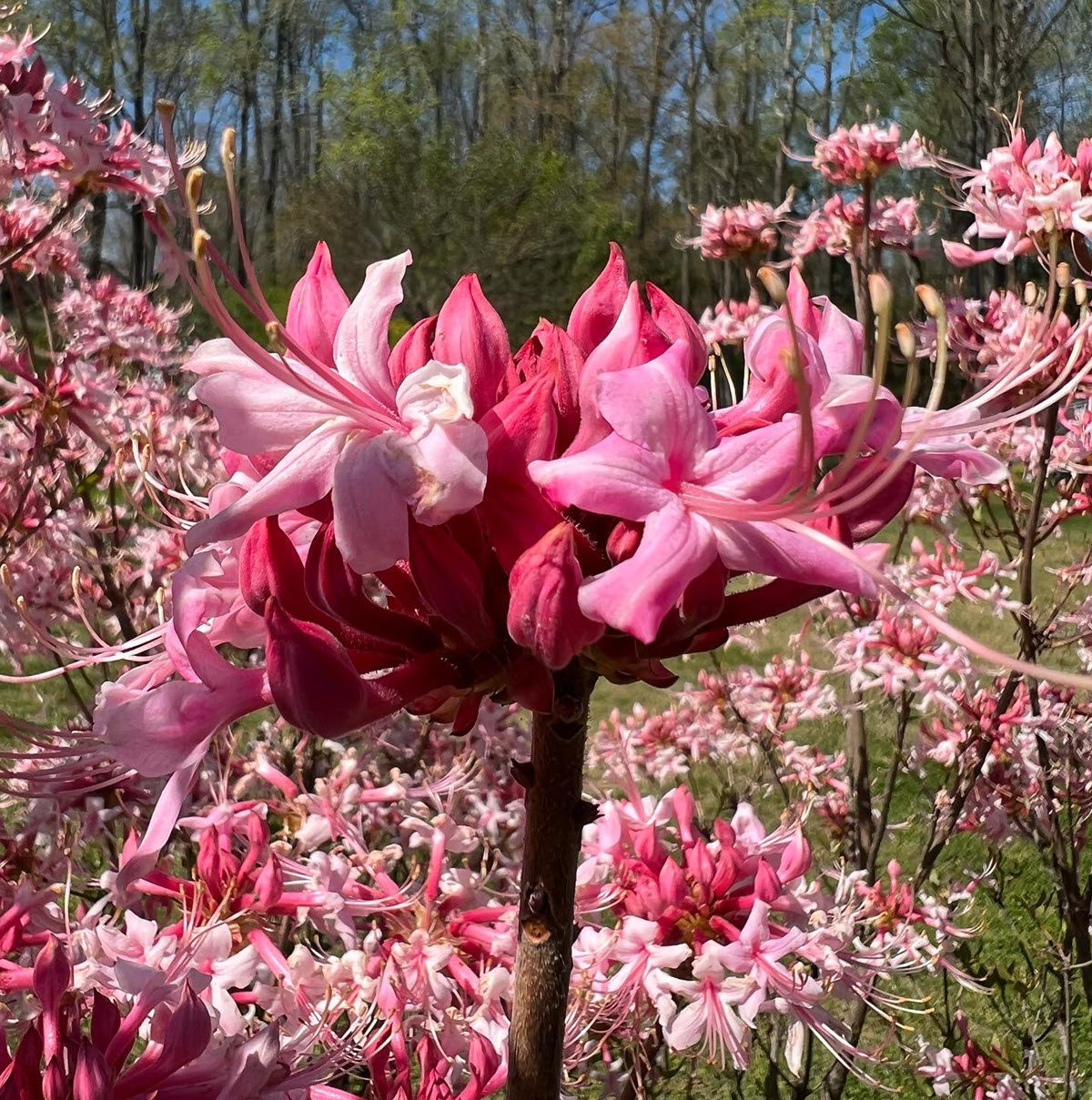
Reminiscent of honeysuckle blooms, native azalea flowers are trumpet shaped and fragrant. This Rhododendron canescens 'Varnadoes Phlox Pink’ puts on an amazing display in my garden early each spring before its leaves appear.
General Information
Choosing a site
Just like their popular Asian cousins, native azaleas prefer to grow in acidic, moist, well-drained soil. Often considered best for woodland environments, these spring bloomers can tolerate a considerable amount of shade. Morning sun is commonly recommended, but they bloom much more abundantly with brighter exposure. In fact, I grow ‘Varnadoes Phlox Pink’ pinxter azalea, R. cansescens in FULL west facing sun and it has thrived with supplemental water through many summers.
Planting & Fertilizing
I have been growing a wide selection of cultivars in my garden for more than a decade. All are growing in a combination of my native sandy soil, mixed with ½ Soil³ compost and ½ ground, aged pine bark.
Each fall I top dress with 1-2” of Soil³ compost and then mulch with pine bark to ensure the pH remains acidic. Every spring I am rewarded with beautiful, fragrant blossoms!
Pruning
How big do they get? That is hard to summarize with so much diversity but count on most species growing to about six foot tall and wide in ten years. There are exceptions that grow smaller, such as the swamp white azalea R. viscosum that is under three foot tall and wide after ten years in my garden. In contrast, the flame azalea, R. calendulaceum, can easily reach over ten feet high.
As with all azaleas, knowing when to prune is important because you don't want to inadvertently prune off the next season's flowers. The easiest solution is to do tip pruning shortly after the plant has flowered. With native, deciduous azaleas that would mean pruning in the late spring and early summer depending on the species and variety. This will ensure the plant has the full growing season to establish and you won't miss out on flowers the following year.
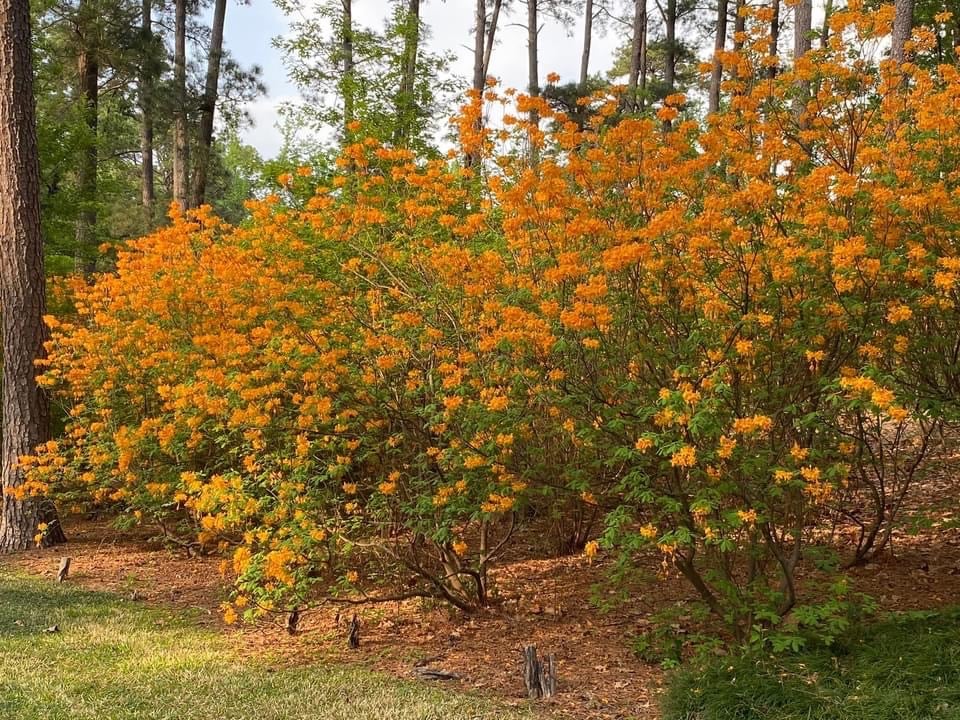
You can see why R. calendulaceum is commonly called “flame azalea.” This sloped planting of several shrubs looks like it is on fire!
However, if you have large, overgrown deciduous azaleas, you can do a hard cut back, or rejuvenation pruning in early spring, when the plant is flushing new growth. This approach is dramatic and generally unnecessary for these native shrubs. The best advice about pruning starts with appropriate plant placement. Before you plant, think about the realistic mature size - at least 6' tall and wide at a minimum. Don't plant these shrubs in an area where you will be trying to keep them tiny, that defeats the purpose of growing them.
Pests
In general native azaleas have very few pests to worry about, unlike their evergreen cousins who suffer from terrible lace bug infestations. One of the many advantages of growing these native species is the simple fact that they lose their leaves, meaning any foliage based pests are short lived. I have never treated a native azalea for a pest problem because my plants have never had any issues. If you do see problem bugs such as scale or spider mites, apply horticultural oil which will smother the insects. This is a non-toxic pesticide alternative that is very effective for any plants in your landscape.
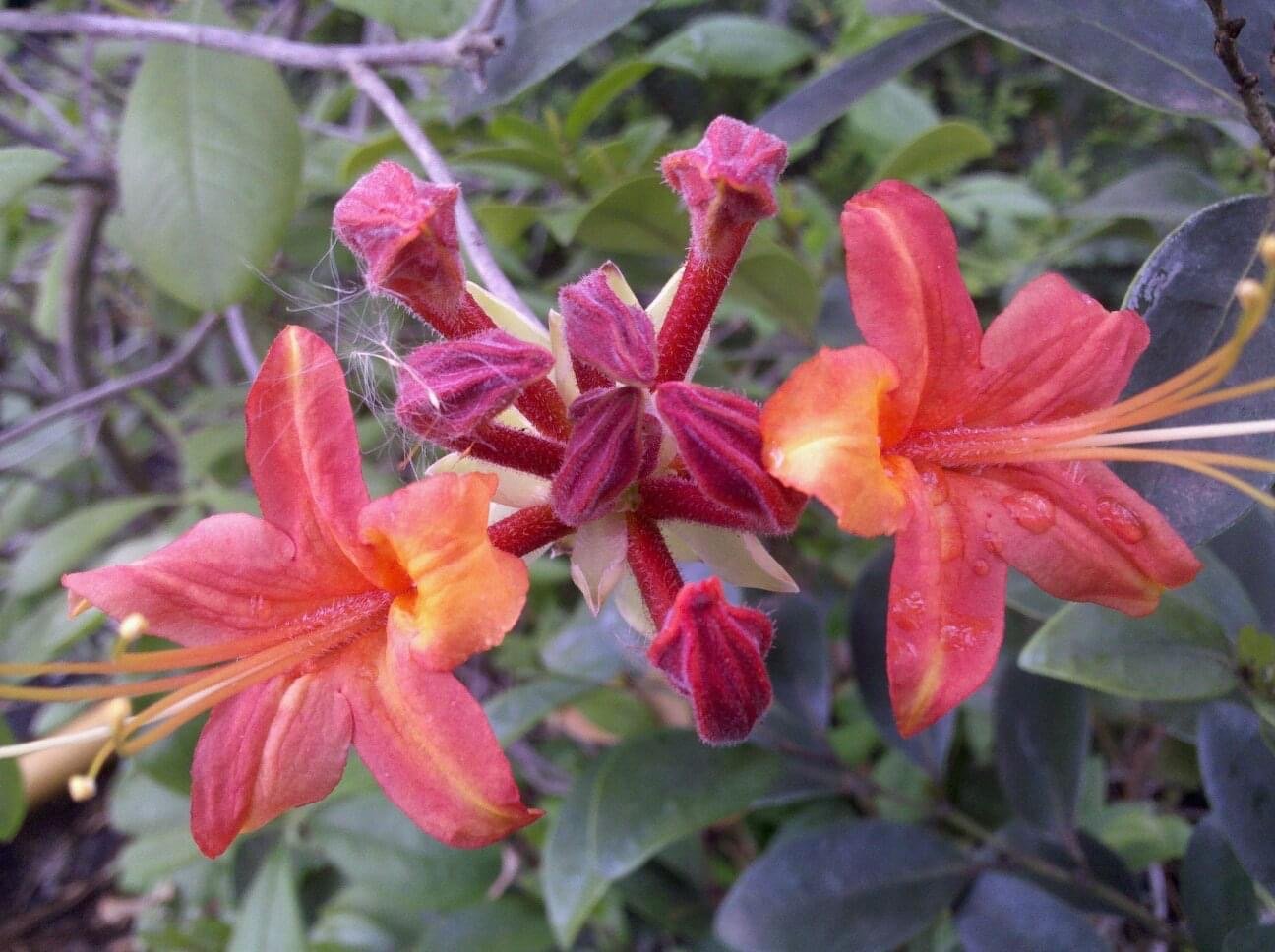
Red Pepper is an Aromi deciduous hybrid with red-orange flowers. Dr. Gene Aromi from University of South Alabama crossed native azaleas with other varieties to breed heat tolerant, disease resistant hybrids with larger flowers that have vivid color and fragrance.
Types of Native Azaleas
Native azaleas are divided into three groups based on flower color: white, orange, and pink.
The White Group
There are six species native to the eastern US that make up the white flowering category, two of which have only recently been identified and propagated. The white flowering forms offer fragrant blooms from early spring through summer!
- R. viscosum was the first native azalea that I ever grew, so it holds a special place in my heart. The fragrant flowers are generally white and explode into bloom after the foliage has unfurled, often in mid-June here in my central North Carolina Garden.
- R. alabamense the “Alabama azalea” has lemony-scented white blooms with a bright yellow blotch in mid-spring.
- R. arborescens called the “sweet azalea” due to its highly fragrant blooms that smell like a Heliotrope, this species blooms in late spring to early summer. It is an ideal landscape specimen and has flowers ranging from white to pink with bright red, showy stamens.
- R. atlanticum also called the “coastal azalea” this can commonly found growing as an understory plant in southeastern coastal plains. The white-pink blooms often have a yellow blotch.
- R. colemanii first described in 2008, the “Red Hills azalea” is one of the newest species to be recognized. This is a tall species, reaching up to 20 feet! The blooms come in a wide array of colors, often with a pale-yellow blotch. Growing along sandy ridges and stream banks of the moist, north-facing hardwood slopes, this species is confined to a small area of Alabama and Georgia.
- R. eastmanii is perhaps the rarest species, growing only in two South Carolina counties with roughly 500 plants known to exist. Though not currently in the nursery trade, propagation and breeding work is being conducted to make this species more available in the future.
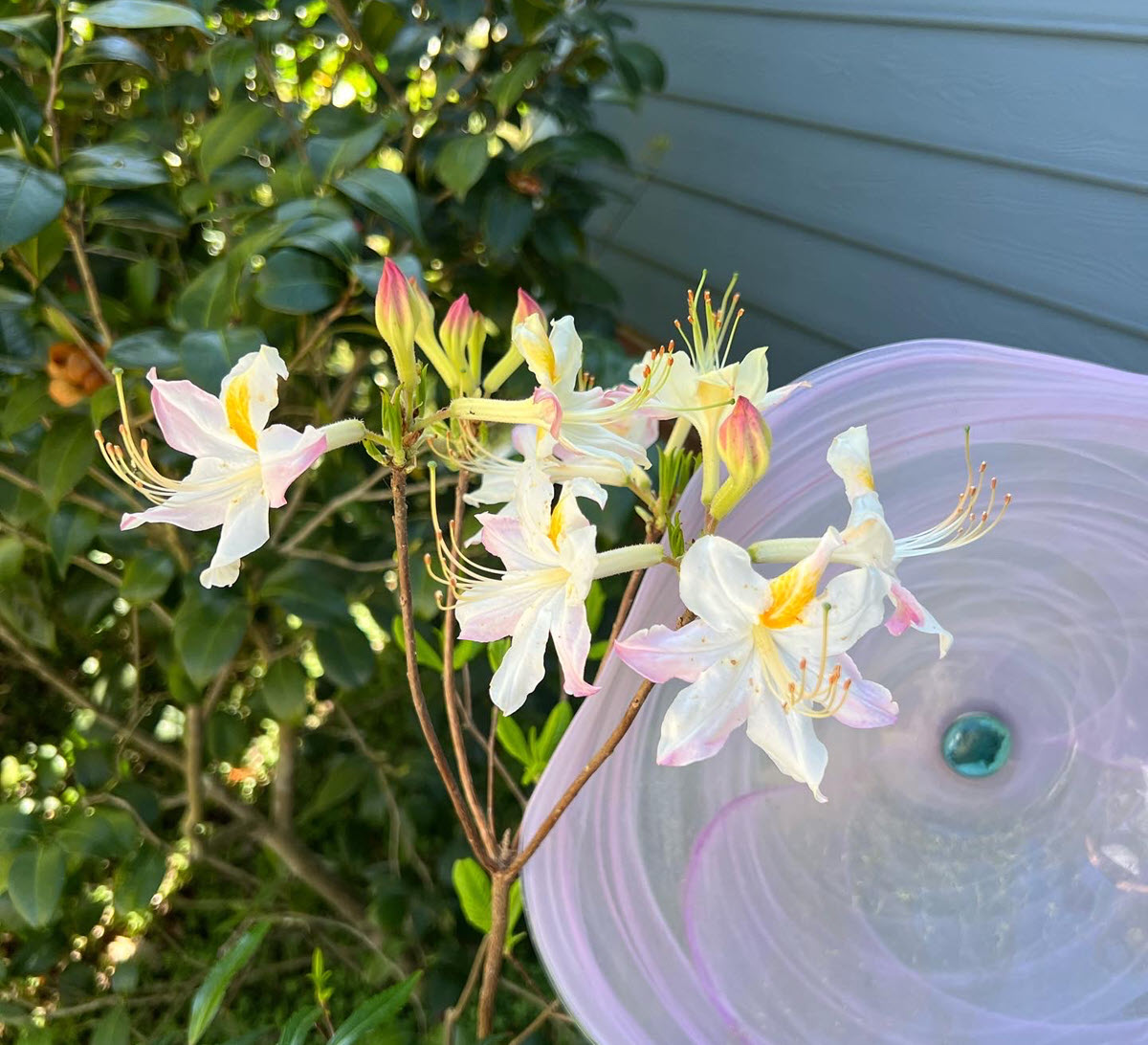
'High Tide' has large white flowers with a golden marking on the top petal and pink highlights. It's another heat tolerant Aromi hybrid with a spicy-sweet fragrance.
The Orange/Red Group
Want a brilliant shot of color? Look for species in the orange/red group, which includes five species native to the southeast. The flowers range from shades of yellow and deep orange to scarlet.
- R. austrinum known as the “Florida azalea” this species blooms early even before the foliage emerges. The sweetly fragrant blooms range in color from orange to golden yellow and have long stamens, almost like eyelashes.
- R. calendulaceum commonly is called the “flame azalea” and can be found growing in the wild in the Appalachian Mountains. These blooms are large and come in a variety of shades from yellow to, orange to brilliant red. Blooming in late May-June this is an outstanding species for home gardeners to enjoy! This variety usually lacks fragrance. The photo below shows the spectacular colors and dramatic stamens.
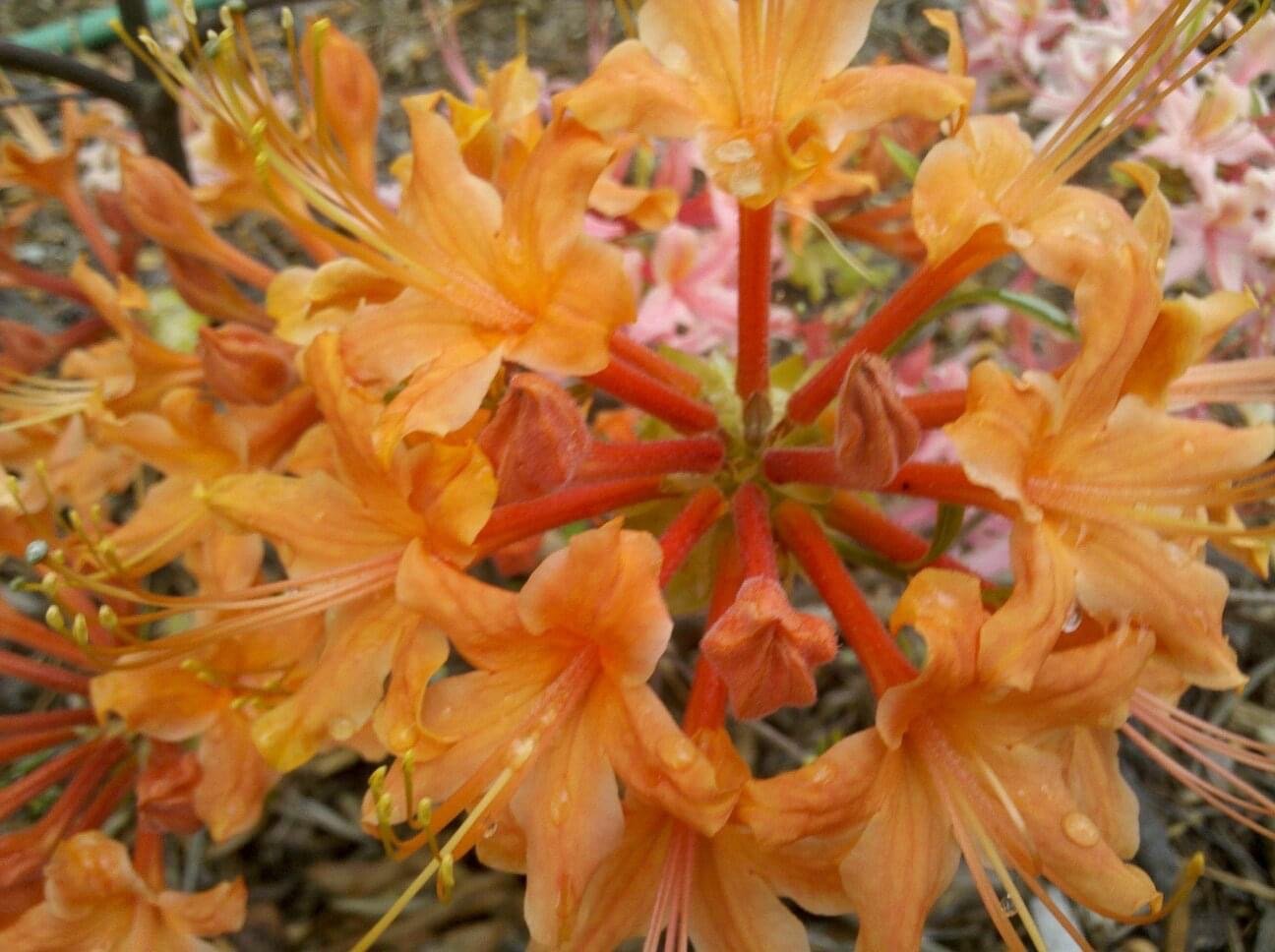
- R. cumberlandense the “Cumberland azalea” is native to the Cumberland plateau in Kentucky, Tennessee, Georgia, Alabama, and North Carolina. The colorful blooms are smaller compared to the flame azalea. This makes an excellent, compact landscape plant.
- R. flammeum is also referred to as the “Oconee azalea.” This species is native to the Piedmont region of Georgia and South Carolina. These blossoms appear later in the season and do not have any fragrance. However, their tolerance of heat is exceptional.
- R. prunifolium commonly called the “plum leaf azalea” offers vivid orange-red flowers in late summer. Plant this is morning sun and afternoon shade to provide the ideal exposure to prolong the blooms during the high summer heat.
The Pink Group
The Pink Group has long been a favorite of mine. These species all bloom in early spring before the foliage emerges with flower from pale pink, deep rose, to almost cherry red.
- R. canadense is an usual native azalea reigning from the north east US and Canada. At one time was classified under its own genera, Rhodora. The purple-pink blossoms have 10 stamens, twice the number of typical native azaleas. I have not grown this species, so I am not sure how it would perform in the heat of the southeast.
- R. canescens is also called the “Florida pinxter azalea” and is one of the most striking species to include in your landscape. It will grow 5-6’ tall and is tolerant of a wide variety of conditions including shade to full sun. The pink blossoms are super fragrant and attract many beneficial pollinators including early season swallowtail butterflies.
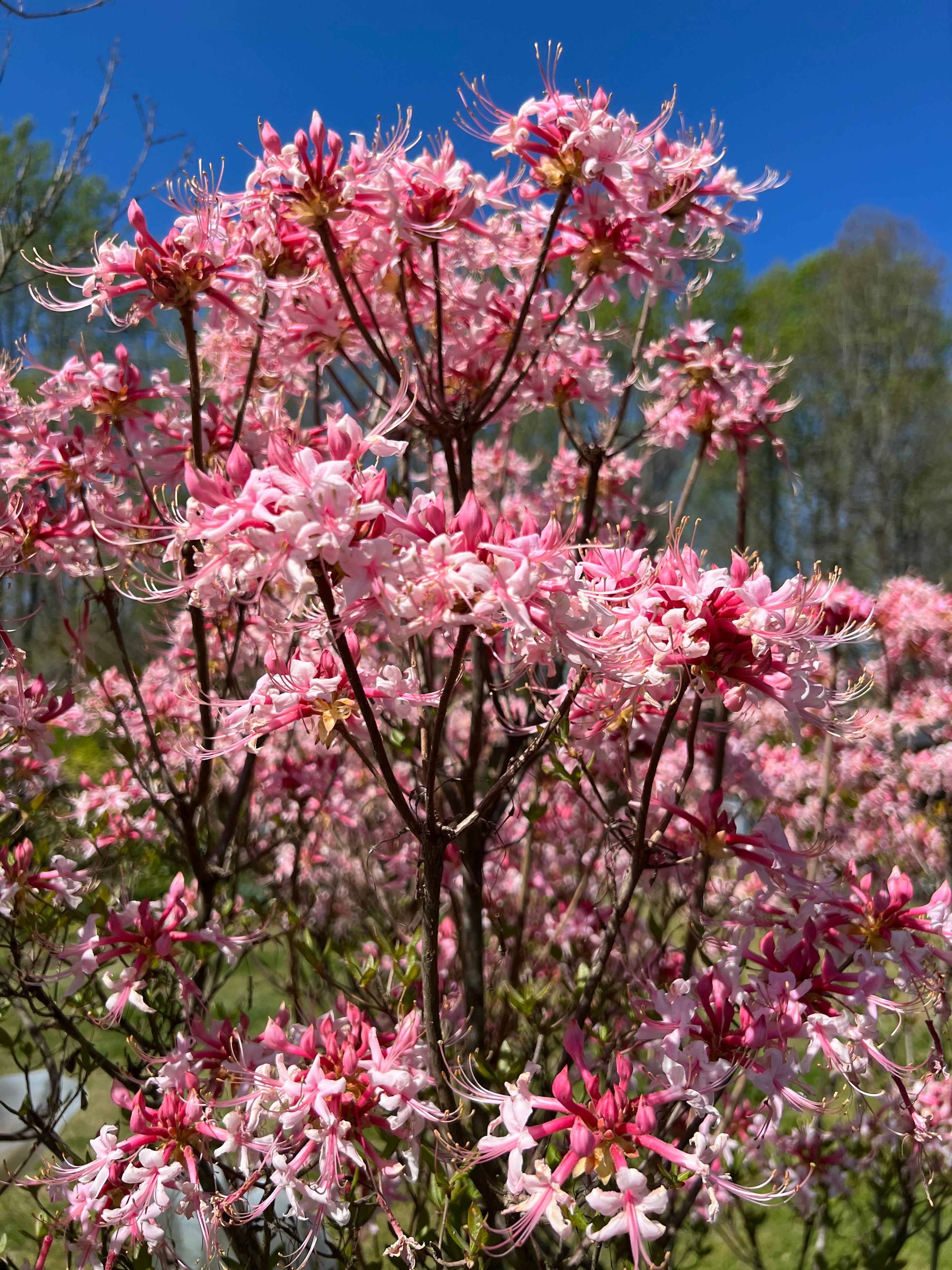
- R. periclymenoides is also called the “pinxterbloom azalea” and is native to the Appalachian Mountains, Piedmont, and Coastal Plains region from Massachusetts to north Georgia. It is often confused with R. canescens, and to be fair I am not sure I would know the difference if I saw them side by side. I think you should grow both!
- R. prinophyllum is another northern species that I have no experience growing. It is reported to be a great landscape plant in cooler climates but likely would suffer in the heat of the southeast.
- R. vaseyi also called the “pinkshell azalea” is a rare species native to a restricted habitat in the high elevation of the North Carolina mountains.
| Botanical Details |
|
Common Name: Native Azalea
Family: Rhododendron
Hardiness: USDA Zones 4-9 depends very much on variety
Size: 6-10’ tall x 4-8’ wide on average, some varieties are smaller/larger
Location: Part shade, morning sun and filtered afternoon shade
Soil: Slightly acidic, moist and well-drained, rich
Bloom Time: March - July depending on variety
Foliage: Deciduous
Flower: Showy, Fragrant
Poisonous: Yes - all parts of the plant are highly toxic
|
Buy from Local Nurseries
It is critical to not disturb plants growing naturally and protect the native habitat. Instead of collecting from the wild, support nurseries that produce these beautiful native shrubs and ask for them at your local garden centers. No one grows them better than Carolina Native Nurseries who have been growing a wide selection for many years! Check out these great videos to learn more about how they are propagated and grown for commercial sales.
I hope you will be inspired to include native azaleas in your garden. They are certainly a plant that I enjoy cultivating and plan to include in my new native foodscape garden that I will soon break ground on!
Brie
Photos by Brie unless otherwise noted.
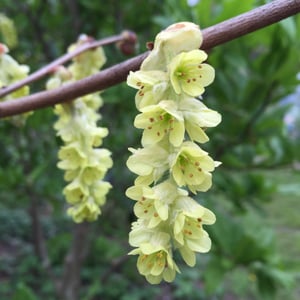
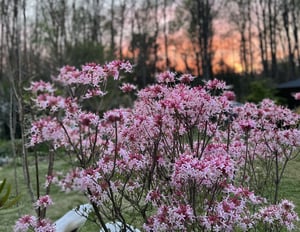

Did this help you out? Have any questions for clarity? Leave a comment below!